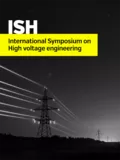Summary
Insulation materials for high voltage equipment in service are affected by various environmental factors. The humidity is one ageing factor that changes condition over the insulating surface with combination of electrical stress. The rapid development of polymer insulation applications especially in the high voltage equipment and the development of the performance of resistance to pollution on surfaces of polymeric isolates, such as lightweight and mechanical strength, the application of polymer insulators has been increasing quickly. Especially, surface hydrophobicity, is one of the most important factors that contribute to the superior performance of the silicon rubber to resist wetting due to its low free surface energy. The present work introduces a comprehensive investigation on electrical characteristics of the widely used polymeric insulating materials under wet conditions. Experiments on breakdown voltage and inception voltage as well as partial discharge (PD) inception have been done under different contaminant drops for different polymeric materials. The applied electric stress, number of droplets, volume of droplets, different droplet positions, different electrolyte by mass, different contaminants solutions and different polymeric insulators with different surface roughness have been studied. A proposed idea as Nano-materials for improving the electrical behavior of polymeric insulator, by adding different types of fillers, under wet conditions will be presented. Presence of droplets on the insulation surface will reduce the inception and breakdown voltages and consequently leads to leakage current increasing. Surface roughness and hydrophobicity are important factors, which eliminate the impact of presence the droplet on polymeric materials degradation. Tri-hydrated alumina filler (THA) greatly improves the electrical properties of the Epoxy resin (EP) by making it less sensitive to wet conditions. , While the rough Silica filler has the lower impact on improving the Epoxy behavior under wet conditions. The behavior by smooth silica Epoxy resin is worse than that at Tri-hydrated alumina Epoxy but still better than the behavior of rough silica one. The water absorption rate of polymeric materials is independent on the roughness of the sample, but it is influenced by the kind of the filler used.
Additional informations
| Publication type | ISH Collection |
|---|---|
| Reference | ISH2017_233 |
| Publication year | |
| Publisher | ISH |
| File size | 1 MB |
| Pages number | 6 |
| Price for non member | Free |
| Price for member | Free |
Keywords
Polymeric Materials, .breakdown, inception voltage, droplets, fillers



